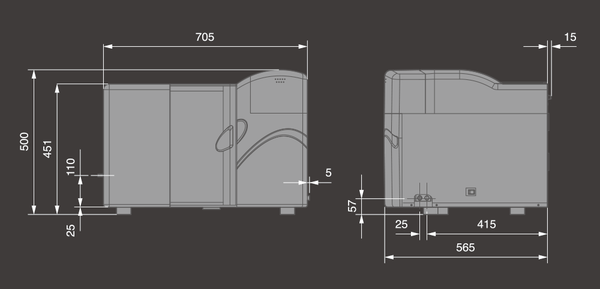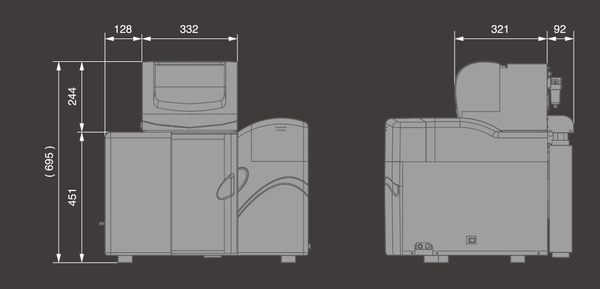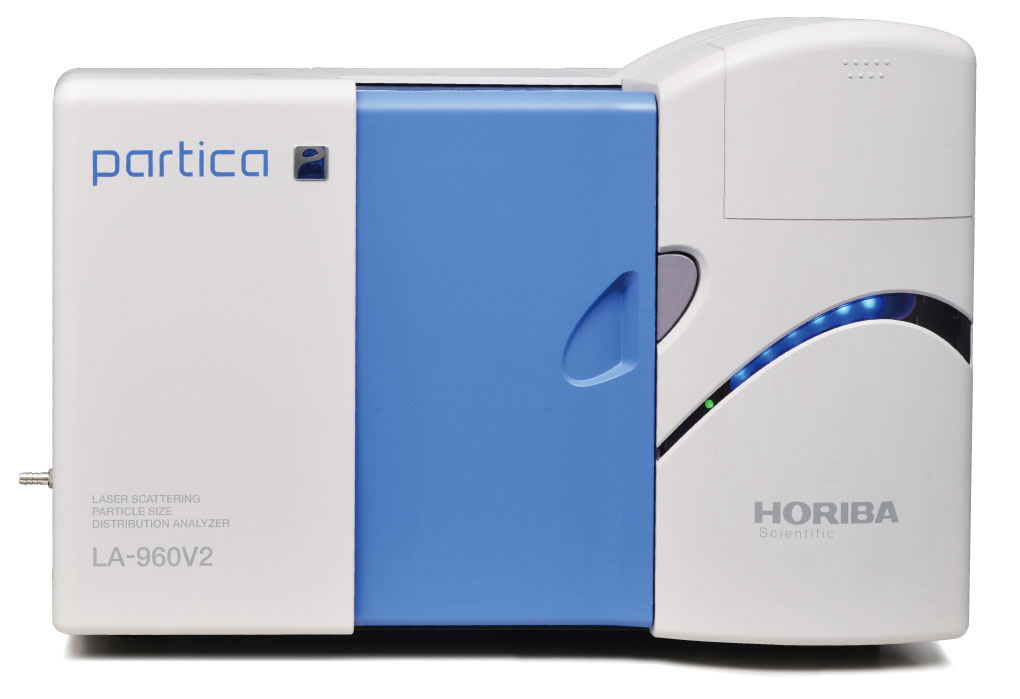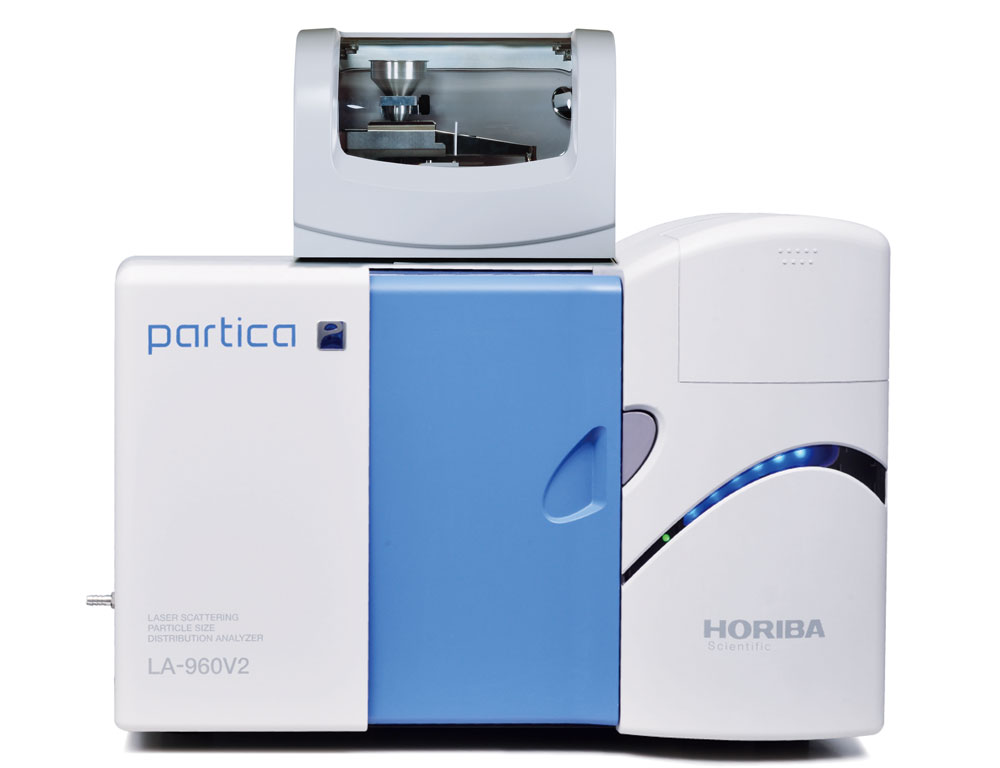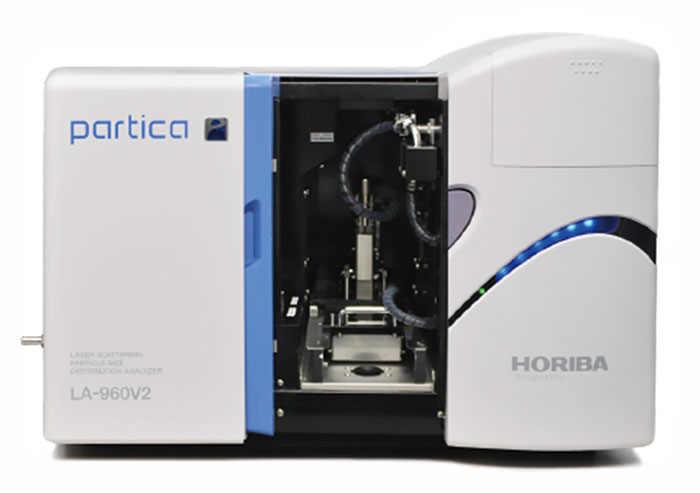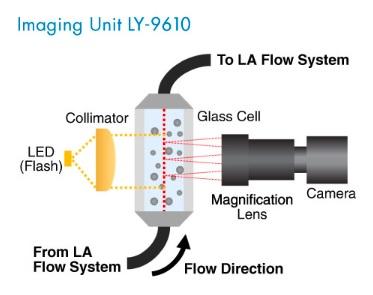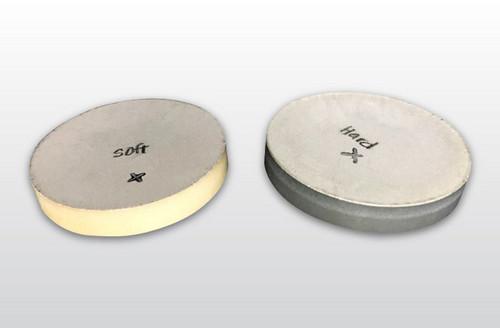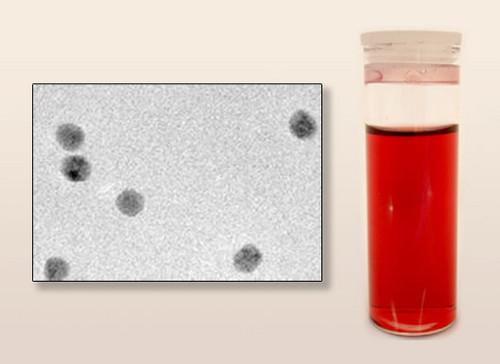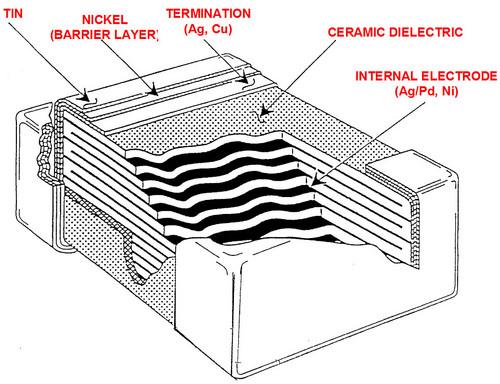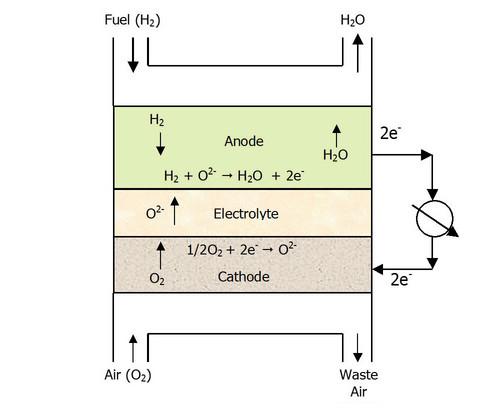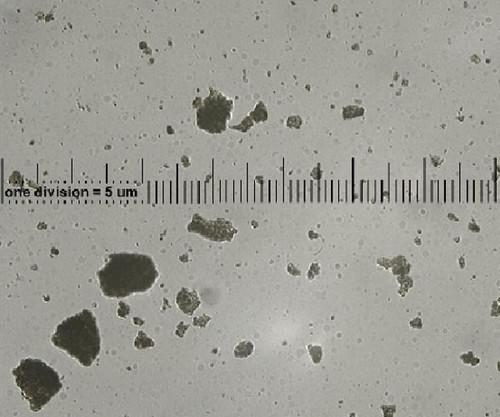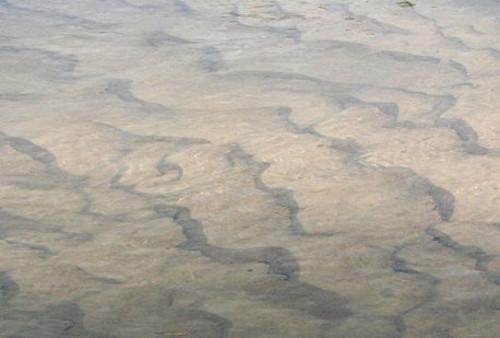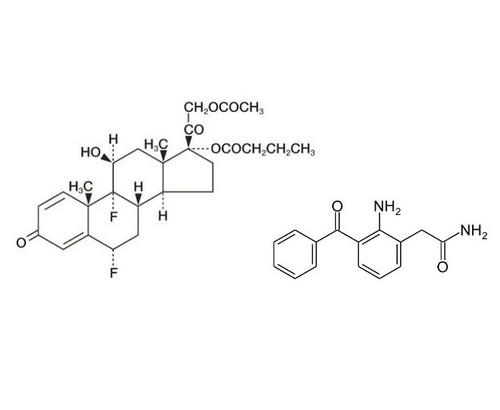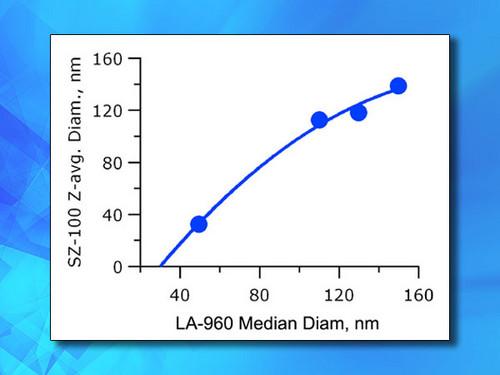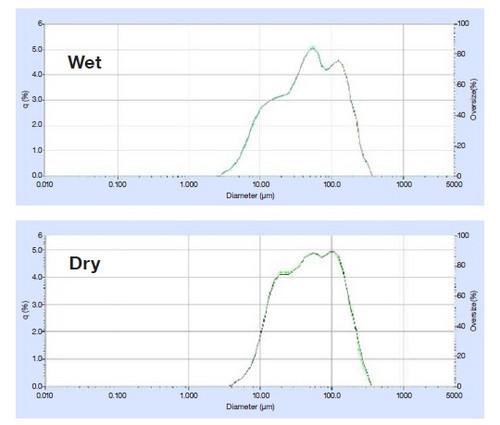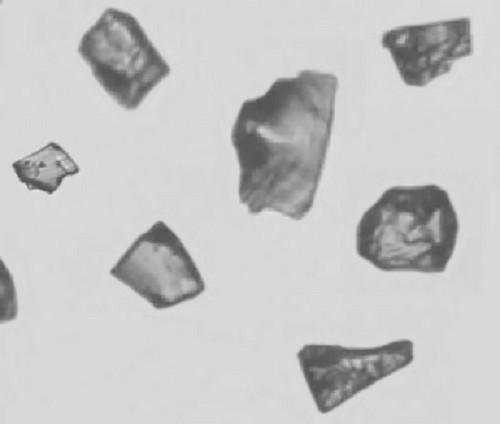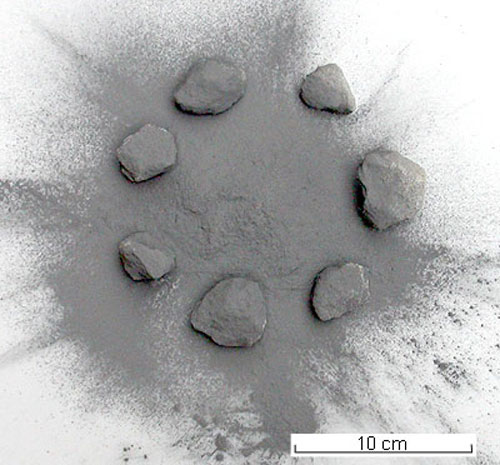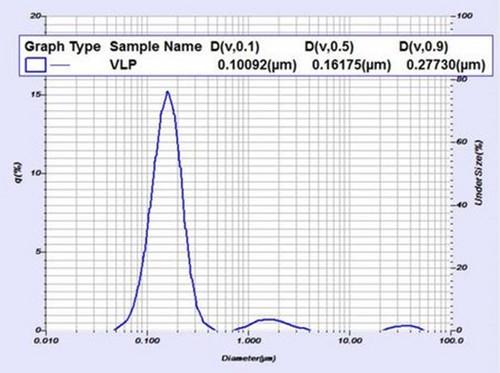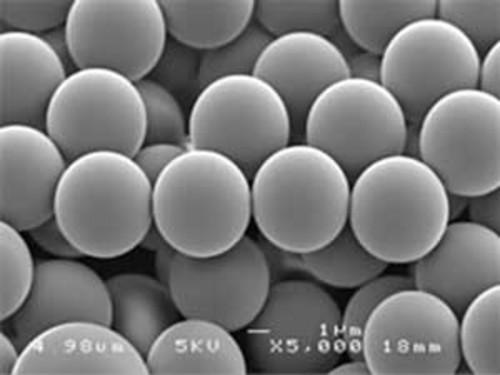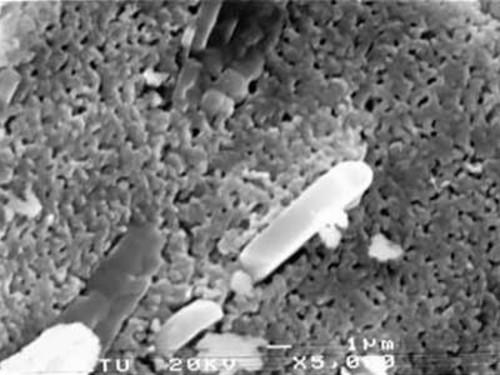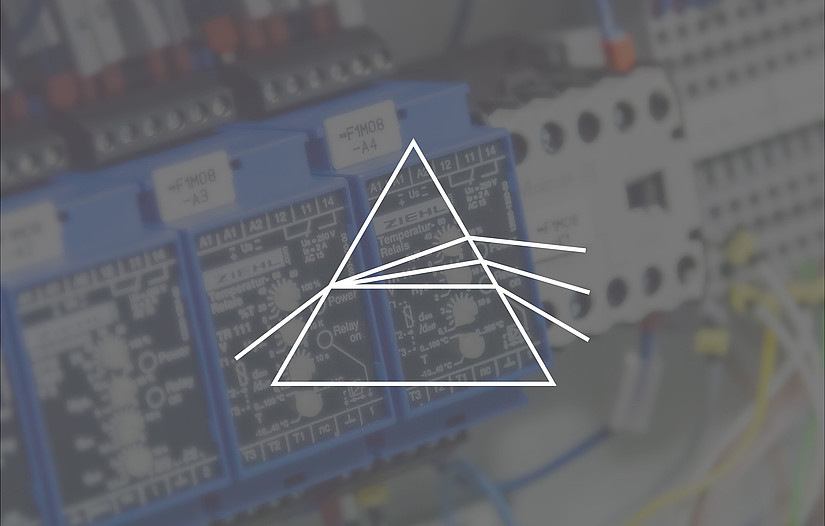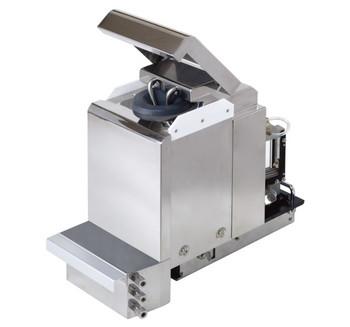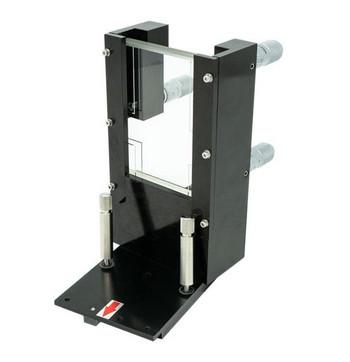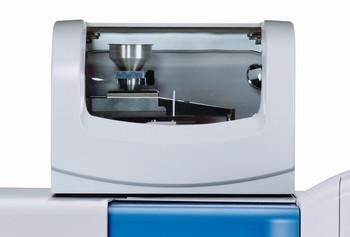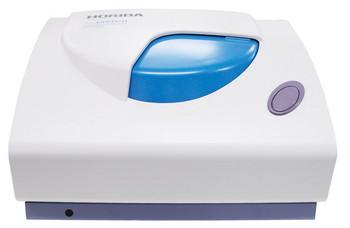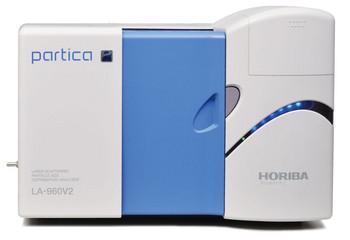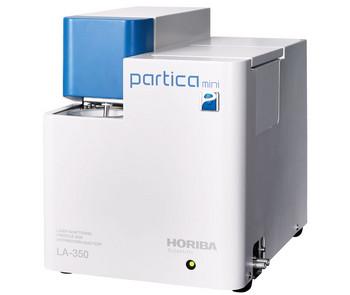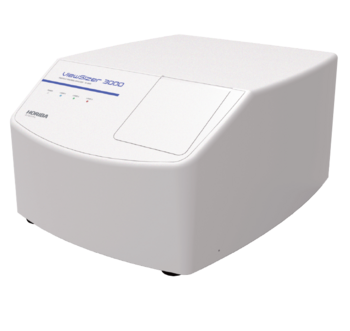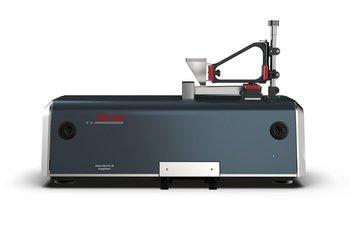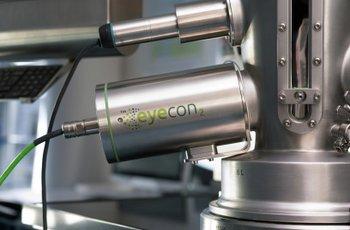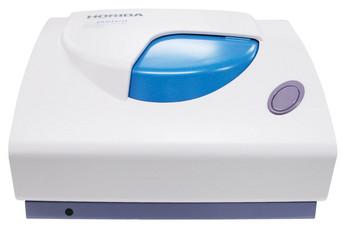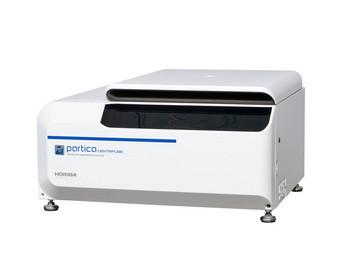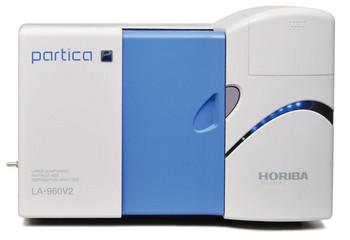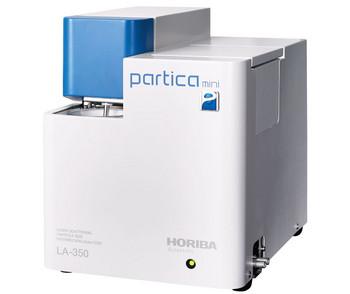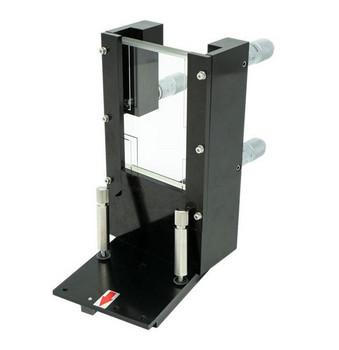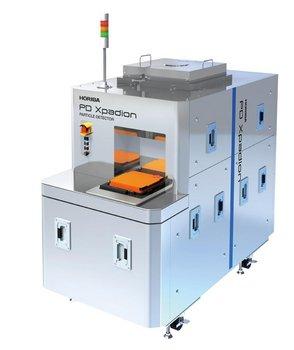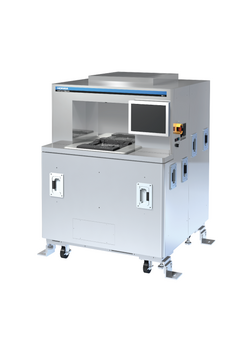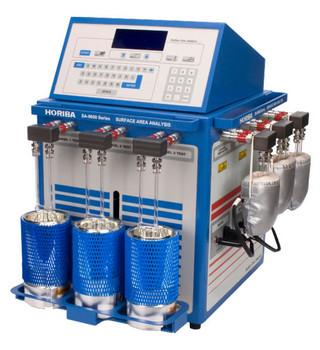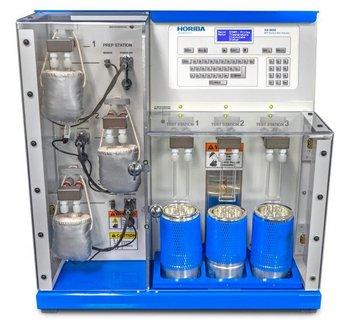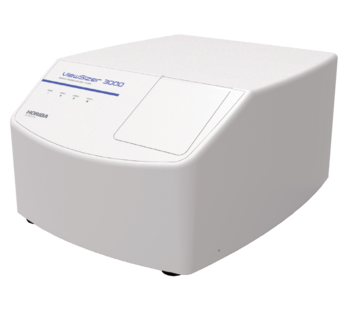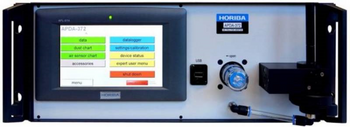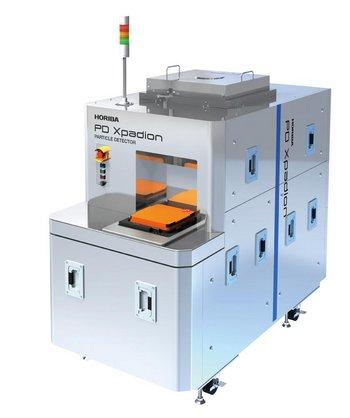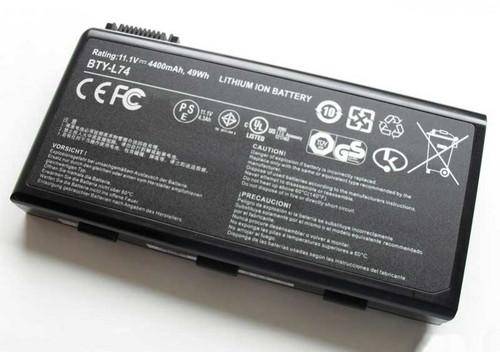
Granulomètre par diffusion laser modèle LA-960V2
Principe de mesure | Diffusion de Mie et diffraction de Fraunhofer |
|---|---|
Plage de mesure | 10 nm - 5000 μm (en fonction des options sélectionnées) |
Temps de mesure | La durée d'une mesure est généralement de 60 secondes entre le remplissage du liquide, l'échantillonnage, la mesure et le rinçage. |
Méthode de mesure | Mesure de la circulation ou mesure avec cellule de fractionnement (cette dernière est facultative) |
Quantité d'échantillon | Environ 10 mg-5 g (en fonction de la taille, de la distribution et de la densité des particules) |
Volume de dispersion | Environ 180 mL pour le système de pompage standard, 5/10/15 mL pour l'accessoire FractionCell, remplissage manuel : 35 mL, remplissage automatique : 40 mL pour l'accessoire MiniFlow. Environ 1 L de LiterFlow (en option). |
Fluide porteur disponible | Eau* (type A), solvant organique (type S) (* l'éthanol à petit volume peut être utilisé comme additif dispersant) |
Communication | USB 2.0 (USB 3.0 nécessaire pour certaines options) |
Sources de lumière | Diode laser à semi-conducteurs rouge de 5 mW (650 nm), LED à semi-conducteurs bleue de 3 mW (405 nm) |
Système de dispersion | Sonde à ultrasons en ligne : 30 W, 20 kHz, niveaux réglables |
Conditions de fonctionnement | 15〜35 °C (59 à 95 °F), humidité relative max. de 85 % (sans condensation) |
Alimentation | CA 100-240V 50/60Hz, 300VA |
Dimensions | 705 (l) × 565 (P) × 500 (H) mm |
Poids | 54 kg |
Équipement informatique | Ordinateur, logiciel compatible avec les environnements Windows® 10 64 bits et Windows® 11 64 bits, |
※ Windows est une marque déposée de Microsoft Corporation aux États-Unis et dans d'autres pays.
Accessoire d'alimentation à sec PowderJet
Méthode de dispersion | Dispersion d'air comprimé à l'aide d'une buse Venturi |
|---|---|
Distribution des échantillons | Système d'alimentation à vibrations |
Élimination des échantillons | Évacuation par le vide |
Plage de mesure | 100 nm - 5000 μm |
Contrôles | Communication : câble série vers l'unité principale LA-960V2 |
Temps de mesure | Une mesure nécessite généralement 2 secondes ou plus. |
Conditions d'utilisation du système PowderJet | 15〜35 °C (59 à 95 °F), humidité relative max. de 85 % (sans condensation) |
Dimensions | 332 (l) × 321 (P) × 244 (H) mm (hors parties saillantes et unité de mesure LA-960V2) |
Alimentation de PowderJet | 100 V CA, 120 V, 230 V, 50 ou 60 Hz, 1 500 VA (système de vide inclus, sans unité de mesure LA-960V2) |
Pression d'alimentation en air comprimé | Pression d'origine de l'alimentation en air comprimé : 0,4-0,8 MPa |
Raccordement à l'air comprimé | Raccord rapide pour tube de résine de 6 mm de diamètre extérieur |
Remarques | Le système de vide est fourni de série. |
※ Lors de la commande de PowderJet, veuillez préciser l'alimentation requise en fonction de la destination finale.
※ Les spécifications et fonctionnalités ci-dessus s'appliquent uniquement lorsque PowderJet est installé sur l'unité principale LA-960V2 et contrôlé à l'aide du logiciel LA-960V2.
※ Les fabricants et les modèles indiqués pour le système de vide, le compresseur d'air, l'ordinateur, l'écran et/ou l'imprimante sont susceptibles d'être modifiés.
◎Compresseur d'air
Pression d'entrée comprise entre 0,5 et 0,8 MPa, capacité du réservoir 26 L minimum, débit 45 L/min minimum
Unité d'imagerie LY-9610
| Plage mesurable pour l'analyse d'images | 9 - 1000 μm |
|---|---|
| Taille de pixel | 0,8 μm |
| Vitesse | ≧ 4 ips |
| Fonctions | Histogramme de diamètre circulaire équivalent. Paramètres de forme : Rapport hauteur/largeur*, Circularité*, Longueur*, Largeur* Graphique de tendance de diamètre circulaire équivalent. Analyse a posteriori de l'image capturée (zoom avant/arrière, mesure de la taille). |
| Communication | USB 3.0 |
* Logiciel avancé en option
Accessoires
| Composants | LA-960N2 | LA-960A2 | LA-960S2 | LA-960W2 | LA-960L2 | |
|---|---|---|---|---|---|---|
| Optique | Système optique standard | • | • | • | • | • |
| Possibilité d'utiliser de l'éthanol comme additif dispersant. (0,01 -3 000 μm) | Système de circulation standard | - | • | - | - | - |
| Adaptateur de remplissage sous pression | - | - | - | • | - | |
| LiterFlow | - | - | - | - | • | |
| Système de pompe péristaltique | - | - | - | • | - | |
| Type de solvant(0,01-3 000 μm) | Système de pompe standard | - | - | • | - | - |
| Accessoires | Support pour cellules de fractionnement | • | • | • | • | • |
| Mini-Flow avec unité à ultrasons (0,01-1 000 μm) | • | • | • | • | • | |
| Support pour Paste Cell | • | • | • | • | • | |
| Unité sèche (0,1-5 000 μm) | • | • | • | • | • | |
| Échantillonneur automatique | - | • | • | • | • | |
| Cellule à haute concentration | • | • | • | • | • | |
| Unité d'analyse par imagerie | - | • | • | • | • | |
Dimensions externes (mm)
